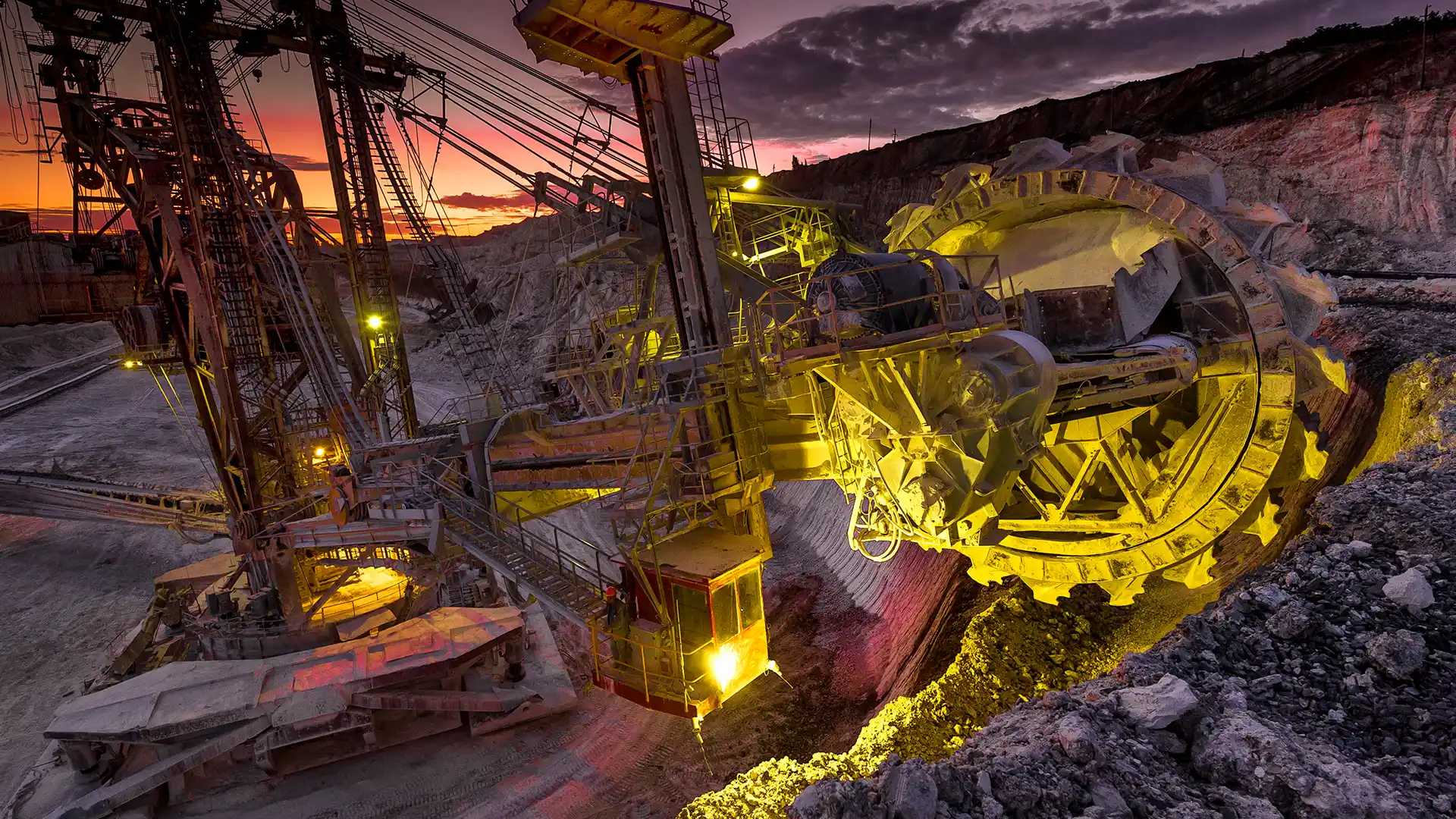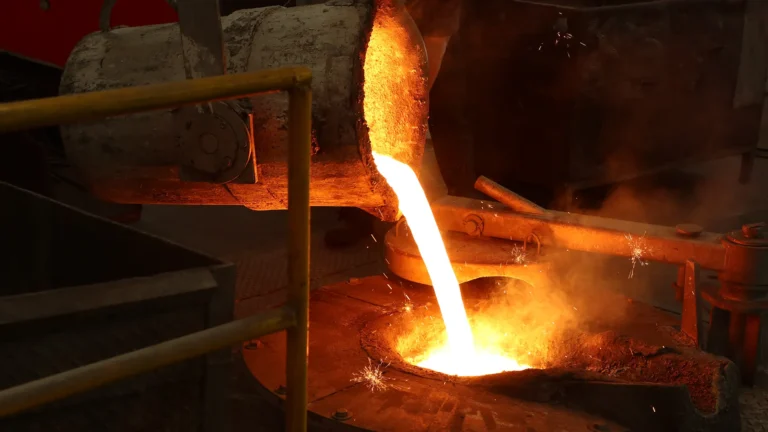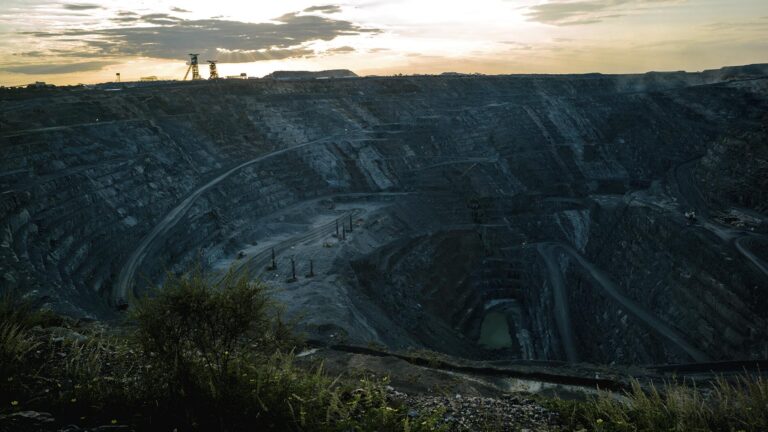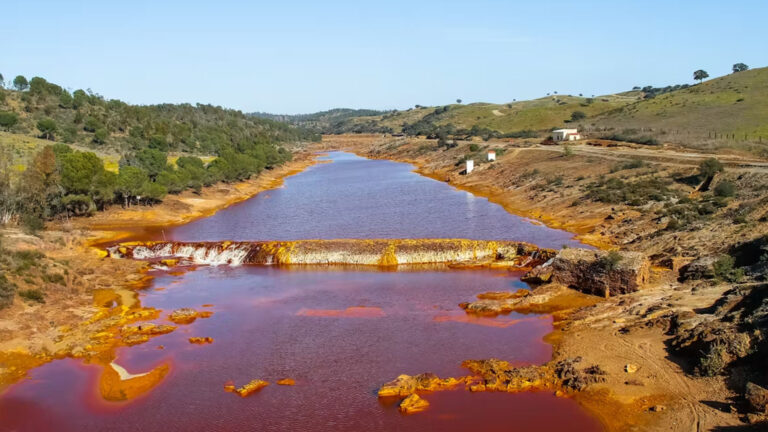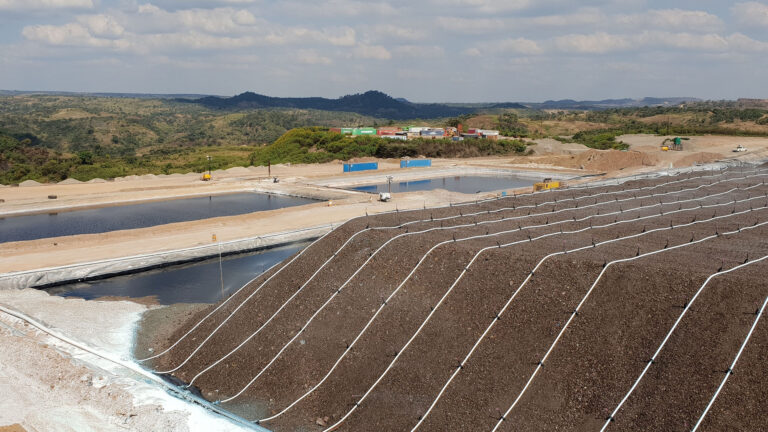Mining is one of the oldest human industries, dating back thousands of years to when early civilizations first began extracting materials from the Earth for tools, weapons, and building structures. Mining activities date back to prehistoric times, when early humans mined flint and other minerals for tools, marking the beginning of mineral extraction in the ancient world.
Today, mining is a highly advanced and regulated sector critical to modern economies. The world’s mining history demonstrates its impact across different regions and highlights its global significance throughout human civilization. It provides essential raw materials used in construction, manufacturing, energy production, and technology development.
Over time, mining has evolved from traditional methods to modern practices, incorporating advanced technology, enhanced safety, and a focus on sustainability.
In this blog, we look at a guide to mining, what it is, and how it benefits economies around the world.
What is Mining?
Mining refers to any operation undertaken to extract minerals from the Earth.
The mining process involves removing valuable materials from ore deposits located beneath the Earth’s surface or within the ground. These operations can include:
- Pitting
- Digging
- Quarrying
- Drilling
- Blasting
Mining extracts a wide range of materials, including valuable metals, sand, fossil fuels, and other minerals. Examples include gold, iron ore, coal, and gravel.
There are major categories and other types of mining methods, such as surface mining, underground mining, and hard rock mining, each designed to access ore deposits and other minerals from different parts of the earth’s surface and ground.
Mining is more than just the act of digging up resources; it is a comprehensive process involving exploration, extraction, transportation, processing, and rehabilitation. It is also an intricate socio-economic and environmental activity that requires thorough regulation and oversight to balance interests between resource extraction and ecological protection.
What are Minerals?
Minerals are typically naturally occurring, inorganic substances with a specific chemical composition and crystalline structure.
They are the building blocks of rocks and are extracted from ore deposits for various uses in industrial and economic sectors. Minerals are valuable because they can be processed into mining materials for industrial use, construction, and manufacturing.
Classification of Minerals
Fuel Minerals
- Coal
- Lignite
- Petroleum (oil and gas)
- Uranium and Thorium (used in nuclear energy)
- Non-Fuel Minerals:
- Metallic Minerals:
- Iron
- Copper
- Aluminum
- Gold
- Silver
- Tin
- Lead
- Zinc
- Precious metals, such as gold, silver, and platinum, are highly valuable due to their rarity and industrial applications.
- Non-Metallic Minerals:
- Limestone
- Marble
- Gypsum
- Dolomite
- Mica
- Asbestos
- Sand (an example of a non-metallic mineral commonly extracted from gravel deposits)
- Other minerals
Ore deposits are sources of various minerals, including metallic, non-metallic, and other minerals not listed here. Examples of mining materials include coal, iron ore, sand, and other types of minerals that are processed for industrial applications.
Socio-Economic Benefits of Mining
Mining plays a pivotal role in the development of societies by:
- Job Creation: Providing employment opportunities for local populations, including skilled and unskilled labor. In remote areas, mining is often the largest employer.
- Income Generation: Raising income levels and promoting entrepreneurship in support industries such as transport, catering, and equipment supply. Mining leads to the development of support businesses, including those supplying fuels and electricity.
- Infrastructure Development: Leading to the development of roads, schools, hospitals, and utilities in mining areas. These often benefit communities long after mining ceases.
- Technological Advancement: Driving innovation in equipment, safety, and resource management that can be transferred to other industries. Mining has led to innovations in electricity generation and resource processing.
- Community Investment: Through corporate social responsibility (CSR) programs, mining companies invest in education, healthcare, and social welfare projects.
Mining is a business that provides valuable resources, such as minerals and ores, which are often processed to add value and support economic growth.
Prospecting and Mineral Exploration
Before any mining can begin, the area must undergo prospecting and exploration processes aimed at discovering valuable ore deposits.
These processes use scientific and technical methods to assess the presence, quantity, and quality of mineral resources.
Examples of exploration techniques include:
- Geological Mapping: Identifying rock types and structures, often by mapping the Earth’s surface.
- Remote Sensing and Aerial Photography: Capturing landscape features and mineral patterns from satellites or aircraft.
- Geochemical Analysis: Testing soil and water samples for trace elements and other valuable minerals.
- Geophysical Surveys: Using magnetism, gravity, and resistivity to detect ore bodies.
- Drilling and Sampling: Extracting rock cores from the ground to analyze mineral concentration.
This phase is critical to ensuring the economic viability and environmental safety of a future mine.
Licensing and Regulation
Mining activities are subject to legal control to protect national interests and local communities, and regulations can vary significantly from one country to another.
In some countries, mining is classified as a business activity, which affects how it is regulated and taxed. Licenses and permits are required for each phase of the operation:
- Prospecting License: Grants the right to search for minerals.
- Exploration License: Allows drilling and testing for mineral content.
- Mining Lease: Authorizes commercial extraction of minerals.
Each license is accompanied by conditions that ensure safety, transparency, environmental compliance, and respect for the rights of indigenous and local communities. Different countries may have specific requirements or additional regulations for operating a mining business.
Deposit Types and Mining Methods
Mining methods are categorized into two primary types: surface mining and underground mining. Surface mining is used when ore deposits are located near the Earth’s surface, whereas underground mining is employed for deposits that are located deeper underground.
Other types of mining include hard rock mining, which involves extracting minerals from solid, challenging geological formations using specialized techniques such as drilling and blasting. Examples of these methods are applied based on the characteristics of the deposit and ground conditions.
Different mineral deposits require different approaches for economic extraction:
- Stratiform Deposits: Layered formations best accessed by surface mining.
- Vein Deposits: Found in fractures or faults, often mined underground, especially using hard rock mining techniques.
- Placer Deposits: Occur in riverbeds or beaches and may be dredged or panned.
The method selected depends on depth, ore geometry, rock mechanics, and environmental sensitivity.
Surface Mining
Used when mineral resources are near the earth’s surface, this method is cost-effective and faster, but more intrusive to the ground and the surrounding landscape. Common types include:
- Open-Pit Mining: Removes ore deposits in successive layers of the earth’s surface and ground.
- Strip Mining: Peels back overburden in strips to access minerals located near the surface.
- Mountaintop Removal: This method involves cutting through mountaintops to expose coal seams.
Examples of materials extracted using these methods include coal, iron ore, copper, and sand.
Environmental Impacts:
- Loss of vegetation and wildlife
- Altered water flow and sedimentation
- Increased dust and emissions
- Significant changes to the surrounding landscape
Underground Mining
Employed when ore deposits, such as hard rock formations, are located deep below the surface and are not economically feasible to mine from above. Underground mining is often used to access these hard rock ore deposits. Examples of underground mining types include:
- Room and Pillar: Creates chambers with support pillars.
- Cut and Fill: Excavates in horizontal slices, backfilling after each pass.
- Block Caving: Collapses large ore bodies under gravity.
Environmental Impacts:
- Sinkholes and land collapse
- Contamination of groundwater
- Ventilation needs and health risks from confined dust
Common Types of Mining Equipment
Advanced machinery enhances productivity, safety, and environmental control. New technologies have enhanced the efficiency and safety of mining equipment, making operations more effective and sustainable. Many types of mining equipment require substantial electricity to operate, which is a crucial factor in determining operational costs. Equipment includes:
- Excavators and Loaders: For digging and moving earth.
- Drilling Rigs: For sampling and blasting.
- Haul Trucks: For transporting ore.
- Crushers and Grinders: For size reduction in the processing of materials.
- Conveyor Belts: For efficient material transport.
- Ventilation Systems: Essential for underground operations.
- Personal Protective Equipment (PPE): Helmets, respirators, gloves, etc.
Environmental and Health Impacts
Uncontrolled mining can degrade the environment and harm human health:
- Acid Mine Drainage: Water mixed with sulfide minerals becomes acidic, polluting rivers.
- Dust Emissions: Lead to lung diseases such as silicosis and black lung disease, particularly from inhaling coal dust.
- Noise and Light Pollution: Affect wildlife behavior and human well-being.
- Loss of Biodiversity: Destroys ecosystems and endangers species habitats.
- Waste Disposal: The improper disposal of mining waste, including toxic materials such as arsenic and mercury, leads to water pollution and poses significant environmental risks.
Mitigation Strategies
To reduce harm, responsible mining companies implement:
- Environmental Impact Assessments (EIA): Required prior to project approval.
- Water Management Plans: Preventing Contamination.
- Air Quality Controls: Dust suppression and emissions filters.
- Rehabilitation of Land: Replacing soil, replanting trees, and ensuring the safe disposal of toxic materials such as arsenic and mercury to prevent environmental hazards.
- Stakeholder Engagement: Involving local communities in decision-making.
Mine Closure and Rehabilitation
Mine closure is a planned process to return land to a stable and productive state:
- Decommissioning Equipment: Safely dismantling all machinery.
- Landform Reshaping: Creating a natural-looking terrain.
- Contaminant Remediation: Contaminated materials are processed to remove or neutralize pollutants.
- Monitoring: Ongoing testing of soil, water, and vegetation.
Sustainable After-Care
Former mine sites can support long-term sustainability through:
- Ecotourism: Promoting environmental education and wildlife recovery.
- Agricultural Use: Turning land into productive farmland.
- Renewable Energy Sites: Hosting solar or wind power projects.
- Research Hubs: Supporting geological and ecological studies.
Community Engagement and Social Responsibility(NEW)
Career Opportunities in Mining(NEW)
Mining in Our Daily Lives
From smartphones and batteries to cars and kitchenware, nearly every product we use is made with mined materials.
These valuable materials are extracted from ore deposits, processed, and then used in countless applications. Without mining, modern civilization would not exist.
It supports the backbone of technology, transportation, medicine, and communication.
Conclusion: A Lifelong Learning Journey
Mining is a foundational industry that shapes economies, societies, and the development of technology.
As with any sector, staying informed about evolving techniques, sustainable practices, and global regulations is vital. This guide is your first step on a journey to understanding the transformative power and responsibility embedded in the mining industry.
Whether you’re a student, investor, policymaker, or simply curious, understanding the fundamentals of mining is essential to appreciating its global significance and long-term impact.
Frequently Asked Questions (FAQ)
What is the difference between minerals and ores?
A mineral is a naturally occurring substance with a specific composition. An ore is a mineral deposit that is economically viable to extract for its metal content.
Can mining be sustainable?
Yes, with responsible planning, regulation, and rehabilitation, mining can be part of a sustainable resource strategy. Modern mining techniques emphasize environmental protection and community inclusion.
What is the safest form of mining?
Surface mining is generally considered safer for workers due to better ventilation and a lower risk of collapses; however, it has a greater environmental impact.
How do communities benefit from mining?
Communities benefit through job creation, infrastructure development, social investments, and revenue-sharing models. However, without proper governance, negative effects can outweigh the benefits.
What happens to a mine after it closes?
After closure, mines undergo a rehabilitation process where the land is restored for future use. This can include reforestation, conversion to farmland, or ecological reserves.
What is an Environmental Impact Assessment (EIA)?
An EIA is a study conducted before mining begins to understand potential environmental risks and outline mitigation strategies.
Are there alternatives to traditional mining?
Yes. Urban mining (recycling metals from e-waste) and seabed mining are emerging alternatives, though both come with challenges and environmental concerns.
Q8: Why is mining important in the modern economy?
Mining provides the raw materials required for infrastructure, electronics, energy, and manufacturing. It is essential for innovation and development across all sectors.

